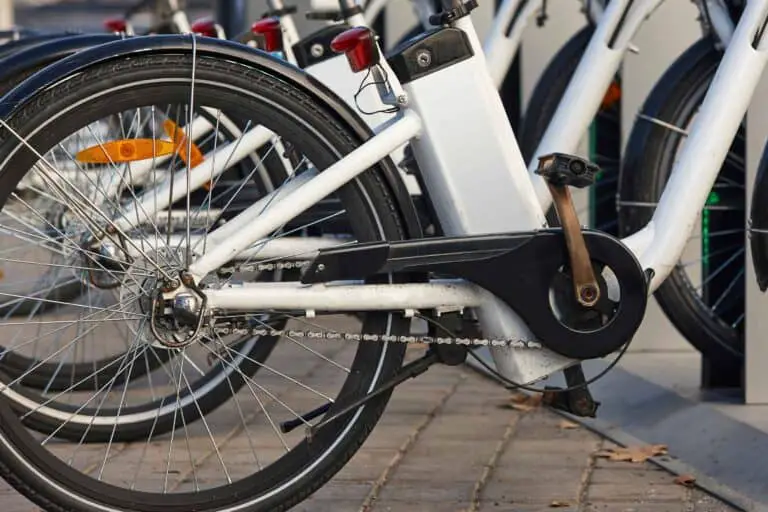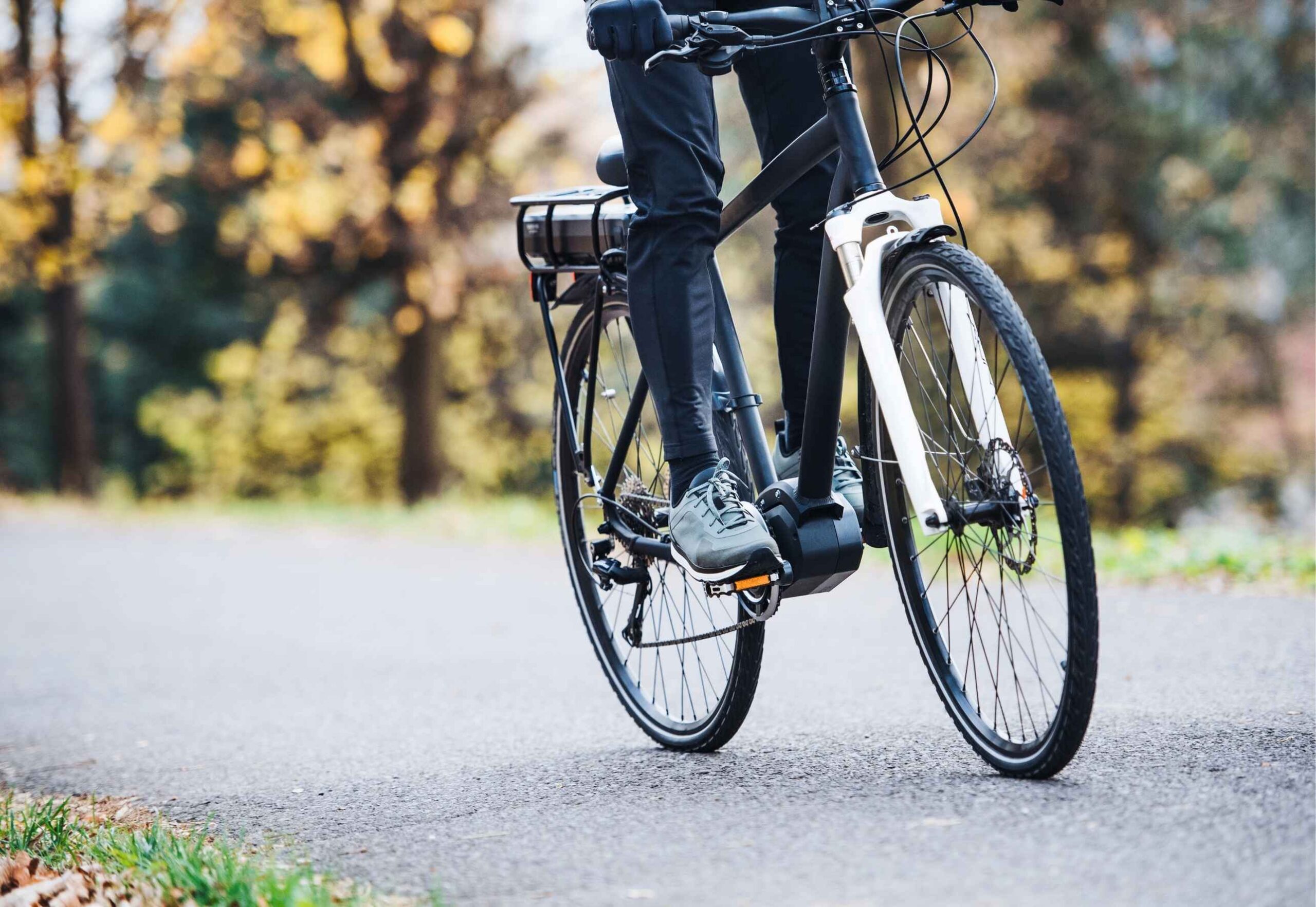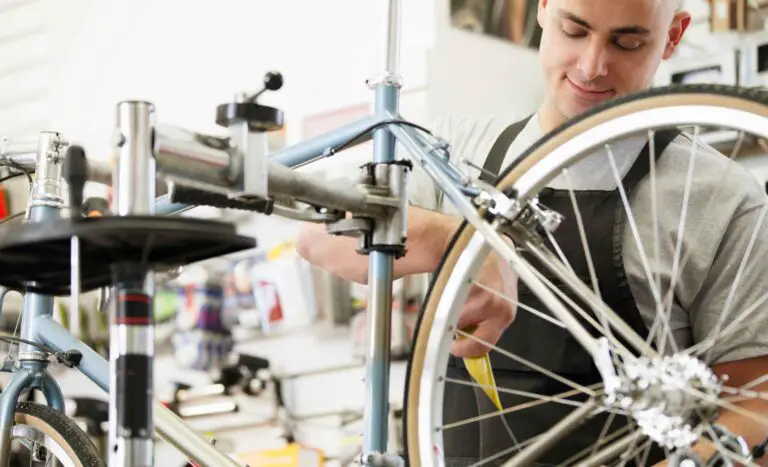How Long eBike Brake Pads Last (We Tested 97 Electric Bikes)
After riding my eBike for a few months, I realized that the rear brake pads stopped braking as well as when I first purchased my electric bike. So I checked the brakes and realized that I wore the brake pads out. This incident made me wonder, “How long do eBike brake pads last?”
On average, brake pads on an eBike can last about 1,000-6,000 miles of riding time. However, this may be affected by several factors like the quality and type of the brake pad, riding style, rider’s weight, weather conditions, and other factors.
As someone who rides an eBike, it is essential to know the longevity of its parts, especially the brake pads, because they are a critical component of your electric ride. It is also equally important to understand how to replace your eBike brake pads and how often you should change them. So let’s dive into details!
How Many Miles Do Brake Pads Of eBike Last?
As a whole, high-quality brake pads for eBikes can last up to 6,000 miles or more, while low-quality brake pads can last up to 1,000 miles or lower. The difference in the lifespan of brake pads depends on different factors that cause them to wear out.
The table below shows the average distance that a few brands of eBike brake pads can last.
| Brand/Manufacturer | Average Distance (in miles) |
| Tektro | 3000 |
| Shimano | 2572.823 |
| SRAM | 1486.411 |
| Magura | 997.5807 |
| Top Brake | 2573.348 |
| Average | 2126.032 |
As you can see on the table, the brake pads of most brands of electric bikes can last more than 1,000 miles. We obtained these averages by measuring the different lengths that brake pads could last under varied conditions.
So, if you wonder why the brake pads of your e-bike wear faster than anyone else’s, you have to consider these various factors.
How Often Do eBike Brake Pads Need To Be Replaced?
As a general rule, brake pads of Electric Bikes should be replaced at least every six months to a year, depending on your usage. You should check your brakes every month for wear. It would be best if you replaced your brake pads as soon as you observe that your brake pads have worn out.
Checking your brake pads from time to time is an excellent way to determine if your brake pads already need replacement. Therefore, it is advisable to check your brake pads every 300-600 miles of riding time.
In this way, you can maintain the braking power of your e-bike and the parts of your entire braking system.
If your brake pads are worn out and damaged, they can also damage your e-bike rotor and the other parts of your electric bike braking system. If that happens, your e-bike’s entire braking system could fail, resulting in an expensive repair, and you probably won’t like it.
If your brake pads have worn out, your e-bike will not have full stopping power. In that case, you won’t be able to stop when needed, which could be very disastrous. So, always allocate time to check your brake pads every month for everyone’s safety.
Do eBike Brake Pads Go Bad?
As a general rule of thumb, e-bike brake pads can go bad if not appropriately maintained. When electric bike brakes go bad, they need to be changed immediately. In addition, well-maintained e-bike brake pads may result in an extended use time and will not go bad as fast.
Electric bike brake pads are one of the brake system components that wear and tear naturally. So, if you discover that your pads are worn out, don’t freak out! Wearing is normal. Brake pads are replaceable. Thus, you can replace them anytime that they go bad.
What Makes The Brake Pads Wear Out Fast?
The list below contains possible factors that change how long brake pads last.
- Quality of your brake pads
- Type of material used in your brake pads
- The weather conditions you ride in
- Riding environment
- Rider and bike’s weight
- Riding and stopping habits
The Quality of Your Brake Pads Affects How Long They Last
High-quality brake pads are made from original and high-quality materials. So if your brake pads are of high quality, there is a lower percentage chance of wearing them out quickly. On the other hand, if you use low-quality brake pads for your electric bike, they may not last for long distances.
How to Choose the Right Kind of Brake Pad’s to Increase How Long They Last
Choosing the correct type of brake pads for your e-bike can significantly affect the longevity of your brake pads. You can choose between metallic or sintered brake pads, organic or resin brake pads, or semi-metallic brake pads.

Organic brake pads are made from mixtures of carbon, rubber, Kevlar fibers, etc. On the other hand, sintered brake pads, also called metallic pads, are from metallic elements, and semi-metallic brake pads are a mixture of two.
Suppose you are going to compare their prices. In that case, organic pads are considered the cheapest, while sintered-metallic brake pads are the most expensive. That is because metallic pads tend to have the highest possible performance and will last the longest compared to the two. So, if you have enough budget and you need the highest performance and longest life span, metallic is your best option.
However, organic brake pads are not bad at all. They may perform the least, but they can still perform well. In addition, organic pads are very quiet and are great for smooth riding. So, if you feel irritated hearing noisy pads, organic pads are for you! But, if you want the benefits of both, you can always choose the semi-metallic brake pads.
Each type of brake pad has different usage and comes in different shapes and sizes, so choosing the right one for your eBike is essential.
How Weather Affects How Long Electric Brake Pads Last
Weather conditions can also affect the lifespan of your eBike brake pads. For example, your brake pads will probably last longer when you are in a location where the weather is sunny and dry most of the time.
On the other hand, expect your brake pads to wear out quickly if you live in an area that rains frequently.
How Riding Environment Affects Electric Brake Pad’s Life Span
The riding environment also plays a significant role in your brake pads’ lifespan.
For example, suppose you are riding in an area with hills, rocky terrain, and muddy roads. In that case, your eBike brake pads will wear faster because you will be using your brakes more often. In addition, your brake pad will wear faster when the dirt is stuck on it.
Increased Rider and Electric Bike Weight Decreases How Long e-bike Brake Pad’s Last
The rider and the bike’s weight also make a big difference in how fast the brake pads of electric bikes wear out. If you and your e-bike are heavy, the brake pads wear out fast because a heavy object or person tends to use so much braking power.
How Riding and Stopping Habits Affect How Long Electric Bike Brake Pad’s Last
You should also pay attention to your riding and stopping habits. For instance, if you are stopping too hard from a high-speed ride, your eBike brake pads will likely wear quickly.
If you are constantly speeding up and braking to slow down, your eBike brake pads will not last as long as if you rode at a more average pace.
How Thick Are New Brake Pads of Electric Bike?
In total, the lowest thickness of new brake pads of electric bikes measures 3mm. This 3mm is only the thickness of the pad material itself, not with the backing plate. The thickness of electric bike brake pads differs with each eBike’s model. Some models may have the same pad thickness.
As someone who rides an electric bike and loves to maintain it, you always want to buy the best material for the least amount of money for your electric bike.
If we do the math, the thicker the material, the longer it takes to wear out. However, sometimes, it doesn’t work that way. If you are thinking, “AHA! I’ll just buy the thickest brake pads so that they will not wear out so quickly”, yes, you can. But, should you?
When buying new brake pads, always think about their compatibility. If the brake pads are not compatible with your electric bike, don’t buy them. That is why you always need to check for compatibility before purchasing electric bike brake pads.
When buying new brake pads, you should start by listing all the recommended brake pads for your electric bike. Next, weigh their pros and cons. Then, choose. Buying the perfect one for your specific eBike is always better than buying the best one in the market.
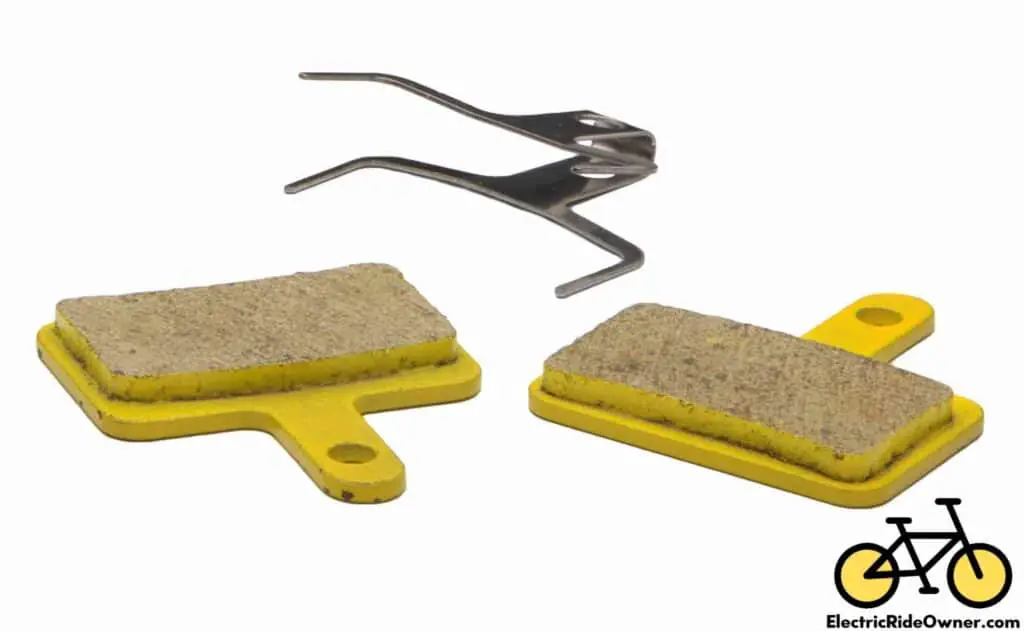
How To Know If My Brake Pads Are Worn Out?
As a general rule, you will know if your eBike brake pads are worn out if there is 1mm or less of the brake pad left. In addition, you will hear a screeching sound when braking, and it will take you longer to stop your bike than average.
Manufacturers usually have a minimum specification for the pads’ thickness. In most cases, when your brake pads’ total thickness becomes 1mm or less, you have to change them right away. You can measure your brake pads’ thickness using a caliper or any measuring device.
The screeching sound that you hear when you brake is one of the signs that your brake pads have worn out.
This screeching sound is produced when the metal of the worn-out pads squeezes the rotor of your e-bike. It would be best not to let this happen because there is a high chance that your e-bike’s rotor will crack.
You should also pay attention to the response time of your brake pad. Brake pads are one of the essential components of your braking system. So if you observe that it takes longer than usual to stop your bike, there could be a problem with your brake pad.
If you have observed any of the signs mentioned above, please don’t disregard them because one problem may cause another issue in the future.
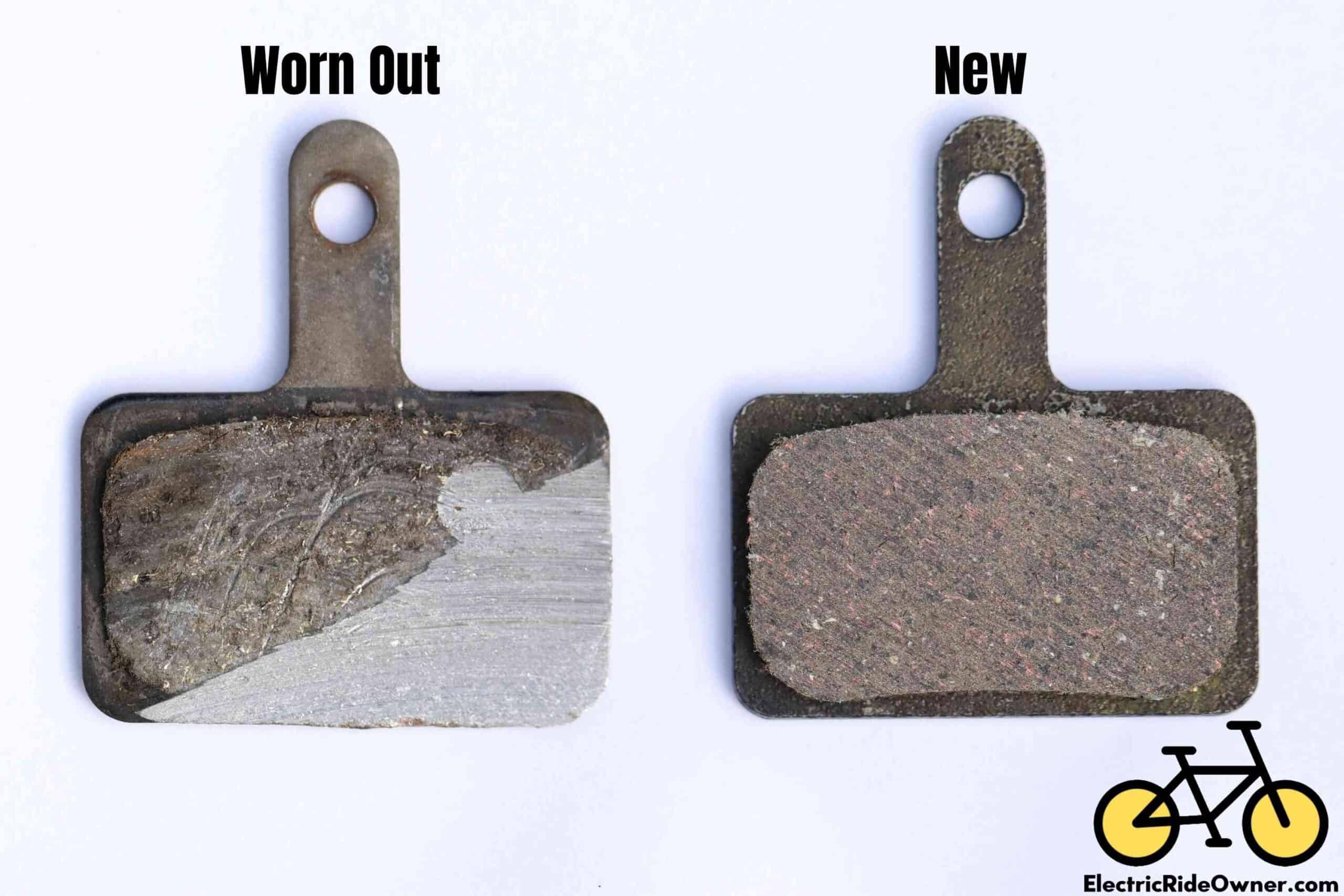
Can I Use Any Brake Pads For My eBike?
As a general rule, you should only use brake pads compatible with your eBike. In addition, you should check with your manufacturer for a list of compatible electric bike brake pads. Brake Pad Manufacturers will often provide a compatibility list of eBikes as well.
In general, brake pads are universal. However, some brake pads are designed for a specific model or system of eBike. So, knowing your e-bike’s model is necessary.
Brake pads have a variety of shapes and sizes. It is also a big help if you use the brake pads that the manufacturer of your eBike recommends. You can contact your manufacturer or a mechanic for alternatives.
If you bought the wrong brake pads, there is a chance that you will have a problem fitting them in. Also, if you use unsuitable brake pads for your eBike, they might not work accordingly the way they should be.
Some braking systems of e-bikes are sensitive. Therefore, it is always better to look for brake pads that are the same as the previous brake pads that you used.
For example, if you have used metallic brake pads before, buying the same type of pads is always a good choice. However, if you were not happy with the performance of your previous brake pads, ask for help from a mechanic or an electric bike store owner.
Many things could happen when you have the wrong brake pads for your eBike. So, it is essential to use suitable brake pads to avoid hurting yourself or damaging your e-bike.
“Never use your face as a brake pad.”
-Jake Watson
What Type of Brake Pads For eBikes Is Best?
As a whole, there is no best electric bike brake pad. There is no perfect brake pad that works perfectly well in all riding conditions. Different brake pads have their advantages and disadvantages when used under specific riding conditions.
Are you having difficulty deciding what type of brake pads to use? Unfortunately, there is no perfect brake pad, so knowing the benefits and disadvantages of each kind will help you decide what to choose.
There are three main types of brake pads: sintered or metallic, organic, and semi-metallic brake pads. These brake pads are made of different materials which are designed for various uses.
Sintered/Metallic Brake Pads
| Pros | Cons |
| Wears slow | It can be noisy |
| Works well in wet condition and long steep descents | Has long “bedding in” time |
| Can handle high temperature | Can damage the caliper |
Sintered brake pads are made of metallic ingredients. Since they are made of metal, they are very durable and very convenient to use by riders with extreme riding styles.
Sintered pads tend to wear slower than any other type of brake pad. In addition, they have strong braking power, so they work well in long steep descent and wet conditions.
Because sintered pads are from metallic particles, they can handle a high temperature. However, the heat coming from the brake pads can transfer to the caliper that can damage it.
Sintered brake pads have a long “bedding in” time so, you need to warm it up first before you can experience its full performance. Furthermore, these pads can also be noisy.
If you are the kind of rider who loves to ride in muddy and rocky terrains and do not mind noisy brake pads, this one is the best for you.
Organic Brake Pads
| Pros | Cons |
| Quiet | Wears fast |
| Has short “bedding in” time | Can’t handle high temperature |
| It is very easy on brake rotors | It does not work well in wet condition |
Organic brake pads are made from a mixture of fibers, rubber, carbon, Kevlar fibers, and fiberglass bound together by resin. Organic brake pads work better if the load is not heavy and you are not into aggressive riding.
Because they are made from softer materials, the organic brake pads don’t produce a loud noise when used and don’t put so much stress on the brake’s rotor. Aside from that, they have a short “bedding in” time so, there’s no need to warm them up for long.
Like other brake pads, there are also disadvantages to using organic pads. One of these disadvantages is that they don’t work well when riding on a long descent. Taking a ride on long descent requires more braking power, thus leading to more heating of the brake pads.
However, organic pads offer little to no braking power when they are heated or if they become wet because the materials are soft.
Organic brake pads are your best option if you hate noisy pads and if you ride on a smooth and flat surface.
Semi-metallic Brake Pads
| Pros | Cons |
| Works better than organic pads in wet condition | It has a little bit of both, so the performance is not always the best |
| Has less noise than sintered brake pad | |
| Has shorter “bedding in” time than sintered brake pad | |
| Wears slower than organic brake pad |
Semi-metallic brake pads are organic pad compounds mixed with sintered pad compounds. Since semi-metallic brake pads have a little of both organic and sintered, they also have similar advantages and disadvantages.
Semi-metallic brake pads are more durable than organic pads but don’t have as much braking power as sintered pads. In addition, they produce less noise than sintered pads but are not as quiet as organic pads.
Semi-metallic brake pads wear slower and can handle more heat than organic brake pads but not as much as sintered pads can do. However, they require less “bedding in” time than sintered pads and can work better in wet conditions than organic pads.
Semi-metallic pads are suitable for anyone who wants to benefit from both organic and sintered pads. However, always remember that the disadvantages of both will always follow. So, it is always best to consider the pros and cons of each brake pad type before deciding which to buy.
If you want to look into their prices, metallic or sintered brake pads are the most expensive of the three, while organic or resin brake pads are the cheapest.
What Are Electric Bike Brake Pads For?
As a whole, brake pads are a component of an e-bike braking system responsible for stopping your eBike. Once you put pressure on your brake pads, they create friction which slows down the wheel of the electric bike, which can ultimately bring your ride to a stop.
Brake pads are an essential part of the braking system. They help you bring your eBike to a complete stop. Often the effectiveness of your electric bike brake pads is the difference between harming yourself and having a safe ride.
When you use the brakes, brake pads squeeze the brake rotor and create friction which causes the wheel to stop.
Brake pads are consumable. Thus, changing your pads when they have worn out is a must. In addition, it is crucial to check your brake pads before riding. That way, you can ensure that you won’t have any issues during your riding and stopping period.
Brake pads! Don’t leave home without them!!
-Bob
Can I Clean My Brake Pads?
As a general rule, you can clean your brake pads. You should be inspecting your electric bike brakes before your rides, and if you notice any foreign debris, you can clean the brake pads. Of course, you always want to ensure that you follow the proper procedure to clean your electric bike brake pads.
If your brake pads are becoming noisy because of foreign debris but you think that they can still work well, cleaning them up would be a great idea. Dirt particles can decrease the braking power of your brake pads and often produce screeching sounds.
You can follow the steps below in cleaning your brake pads.
- Always prepare the materials needed (sandpaper, 70% alcohol or higher, lighter, and a clean cloth). (If you are looking for sandpaper to clean your brake pads, check out this 3M 150 grit sandpaper on Amazon. Aside from using 70% alcohol, we also recommend picking up some WD-40 electrical equipment cleaner spray from Amazon.)
- Put the sandpaper on a flat surface or a table. Next, get the brake pads and rub the brake pads on the sandpaper. Keep rubbing the brake pads until the dirt is removed.
- Once your brake pads are clean, apply a small amount of alcohol to the brake pads.
- Light the brake pads using a lighter. This procedure will help you remove the oil and grease on the brake pads. Always take a step backward to avoid your skin from getting burned.
- Wait for the flame to subside and clean your brake pads using a clean cloth.
Before putting the brake pads back in their places, make sure to clean the rest of the parts of the braking system. That is to ensure that brake pads will work just fine.
Also, don’t forget to try the brake pads first before going on a long ride. However, if cleaning your brake pads doesn’t work, changing them is the best option.
You can also watch a video on cleaning your brake pads on the video below.
Now that you have read this far, you know how vital your brake pads are and the factors that cause them to wear out. Maintaining not only your brake pads but the entire braking system will give you their best braking performance.
How Do You Change Brake Pads On An Electric Bike?
- Prepare all the tools (retaining pin/cotter pin, brake pads, mini nose plier).
- For the front brake pad, you must pull off the wheel first. For the rear brake pad, you must remove the caliper from the frame mount.
- Pull out the existing pin and brake pad.
- Insert the brake pad and make sure to line it up with the holes for the pin.
- Insert the cotter pin and bend the end.
- For the front brake pad, put back the wheel and tighten up the axle. For the rear brake pad, mount the caliper back to the frame.
Watch the full video below on how to change your electric bike brake pads.
Always keep in mind that prevention is always better than cure. So maintain your e-bike now, or you’ll regret it later.
Remember that the steps on changing the brake pads of your electric bike depend on the model of your eBike. So, expect that there are steps that are different from each model of eBike.
Knowing how to replace the brake pads of your electric bike is essential for you to avoid an expensive repair cost if you hire a mechanic. In addition, knowing how to replace your e-bike pads is also very convenient because you’ll be able to replace them as soon as you know they need replacement.
When replacing your brake pads, always make sure that you have the suitable materials and tools for your electric bike. Doing that will help you avoid difficulties that may occur sooner or later.
Also, make sure you know what you are doing if you hate paying more for the repair. So if you are not sure what you are doing, it is better to bring your e-bike to a shop or contact a mechanic.
Why Are My eBike Brakes Squeaking?
In general, e-bike brakes squeak due to the following:
- brake pads contamination
- brake pads are worn-out
- brake pads are new
- misalignment of brake caliper
Brake Pads Contamination Can Make Your eBike Brakes Squeak.
Contaminated brake pads can create a squeaky sound. Contamination may be caused by dirt, debris, grease, mud, and other dust particles. When this happens, you can opt to clean your brake pads.
Worn-out Pads Make Your Brakes Squeak.
When the pads are worn-out, the metal parts contact the caliper and rotor. Thus, creating a squeaky sound. In that case, it is best to replace your brake pads as soon as possible.
Using New Brake Pads Can Cause eBike Brakes To Squeak.
Newly bought brake pads can sometimes create squeaky sounds when they are not “bedded in” properly. Specific brake pads require enough “bedding in” time.
Bedding in time is just another way of saying that you need time for breaking in your new pair of brakes. During the bedding process your brake pads will shed some of it’s top layer, which will lead to a more uniform surface. A more uniform surface will lend itself to increased braking power and a smoother operation.
When The Brake Caliper Is Misaligned, It Can Cause eBike Brakes To Squeak.
Improper alignment of calipers causes rubbing and creates squeaky sounds. In that case, adjusting and repositioning the caliper is the best thing to do.
How Do You Fix Squeaky Brakes On An Electric Bike?
As a general rule, you can fix your squeaky brakes by checking your braking system for possible issues which include but are not limited to brake pad contamination, worn-out brakes, and misalignment of the brake caliper. By identifying if one component has a problem, you can resolve it immediately.
If your brake pads are new and squeaking, you have to “bed-in” your e-bike properly. On top of that, you can run your e-bike and press the brake as hard as you can a couple of times. If the squeaking continues, there might be another issue.
Another way of fixing squeaky brakes is to check if your brake pads are contaminated or worn out. In that case, it is best to clean or replace them.
Checking for possible misalignment is also a way of fixing squeaky brakes. You can do this by doing the steps below.
- Lift your e-bike and spin the wheel.
- If there is rubbing, proceed in realigning your brake caliper.
- Loosen the caliper mounting bolts and wiggle the caliper.
- Pull and hold the lever to center the brake caliper.
- Tighten the mounting bolts and release the brake lever.
- If the squeaking continues, repeat the process.
Watch the video below on how to align the brake system.
If you’re looking for the perfect electric bike to become an Electric Ride Owner, check out this article where we rank the top electric bike brands by budget level and style.

